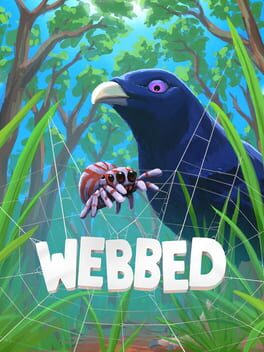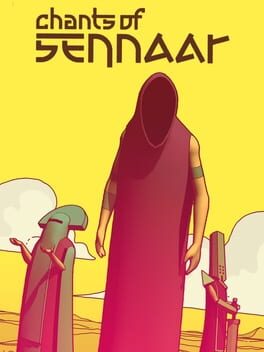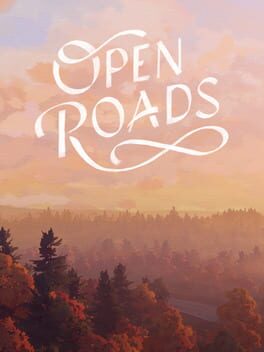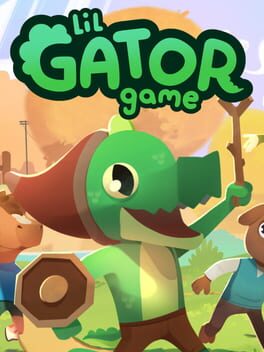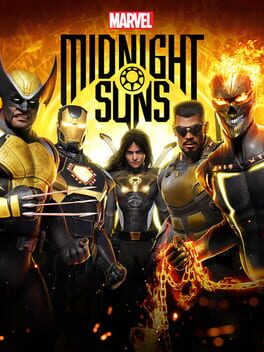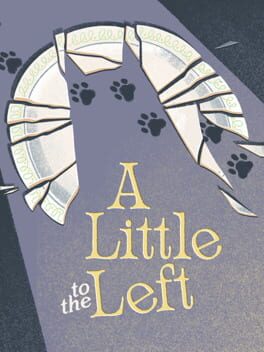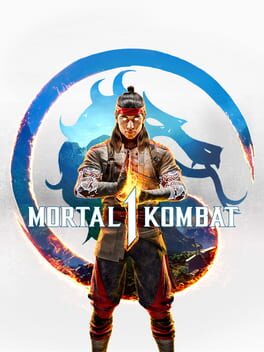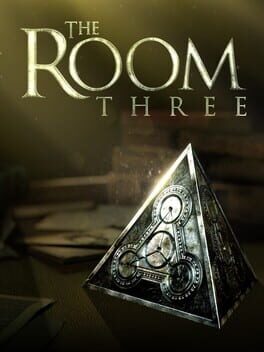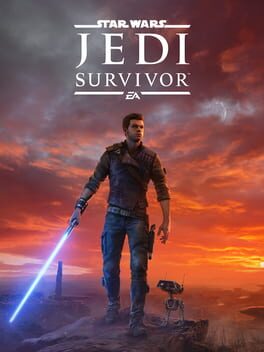Patteca
2021
A pleasantly bite-size metroidvania packed with charm and unique traversal mechanics, and supported by an impressively polished physics system. Being able to construct freeform webs that tense and sag dynamically is a lot of fun, and almost made me jealous that I’m not a spider. Each of the handful of quests pose unique problem types to solve, and each of the other insect civilizations recruited for help is entertainingly evoked. The final boss is sadly one of the weakest parts, but all in all this is a lot of fun.
2023
Great atmosphere and low-poly visuals, and the controls that make or break its gameplay loops feel great to control. Overall it’s a perfectly solid game that I’d recommend, and I thought both of its endings were neat, but I also felt a little like “that’s it?” as I realized its full extent. The compulsive multipart harvest-and-upgrade loops, the number of separate islands, and the expansive list of creatively imagined fish all give the impression that it’s a bigger game than it is. I’m fine with it not being any bigger, but I wish it was okay cutting some of the upgrade loop stuff that retroactively feels like filler, building up needlessly for content that’s not there.
2023
The deduction of icons feels perfectly balanced between not being too spelled out and not being too vague, and I love how each distinct culture is efficiently evoked through their language. Which concepts are core to their culture and common enough that you learn them first? How does their language frame concepts they share with other cultures (e.g. devotees vs impure ones)? Which concepts are so inessential that their language seems to omit them entirely?
Beyond the slow accumulation of understanding, I was impressed by the meta-challenge of forming cultural links, and the eventual ending sequence itself. A lot of similar games feel the need to have a big climactic gameplay sequence to drive home the combined emotion of the story and the full robustness of their puzzle design, but the difference with Chants of Sennarr is that it’s the rare example that actually imagines and executes it well, so I wasn’t distracted with frustration at any point.
Also, what a simple but visually stunning game.
Beyond the slow accumulation of understanding, I was impressed by the meta-challenge of forming cultural links, and the eventual ending sequence itself. A lot of similar games feel the need to have a big climactic gameplay sequence to drive home the combined emotion of the story and the full robustness of their puzzle design, but the difference with Chants of Sennarr is that it’s the rare example that actually imagines and executes it well, so I wasn’t distracted with frustration at any point.
Also, what a simple but visually stunning game.
I tried this out at the tail end of its Game Pass availability, thinking I’d try it and be able to drop it once it started feeling chore-like, and then I ended up hooked and buying it elsewhere once it left GP. The escalation of abilities to break down ships feels uniquely powerful, and the matching escalation of hazards and new ship types and variants keeps the process from getting stale. Similarly, figuring out time-saving shortcuts during breakdown routines feels incredibly satisfying, as does the iterative process of determining which cheap parts are more valuable to not salvage.
Other side activities bubble up as well, like pocketing assorted parts to fix up your own ship or decorate your HAB, or the ghost ships infested with troublesome AI nodes. There’s also a slapstick sense of comedy throughout when breakdown goes wrong, turning hasty disasters into laughs along with the encouragement to be more careful next time.
The labor rights story comes on a little strong at first, but that initial vibe ends up being fitting for the outgoing personality of the organizer. By its conclusion, it manages to be a relatively sophisticated sci-Fi dramatization of labor organizing with emotionally engaging stakes. The climactic industrial action is memorable for the story choices it offers and its clever gameplay twists.
Other side activities bubble up as well, like pocketing assorted parts to fix up your own ship or decorate your HAB, or the ghost ships infested with troublesome AI nodes. There’s also a slapstick sense of comedy throughout when breakdown goes wrong, turning hasty disasters into laughs along with the encouragement to be more careful next time.
The labor rights story comes on a little strong at first, but that initial vibe ends up being fitting for the outgoing personality of the organizer. By its conclusion, it manages to be a relatively sophisticated sci-Fi dramatization of labor organizing with emotionally engaging stakes. The climactic industrial action is memorable for the story choices it offers and its clever gameplay twists.
2024
Not quite as remarkable as Gone Home, but very similar and definitely recommended if you like the sort of game that does storytelling through finding personal artifacts while exploring domestic environments. The central mother-child relationship is relatable but not trope-y, and the uncovered family mystery has some genuine surprises that feel well-earned and believable.
I don’t know how likely a sequel is given this game’s rocky development, but I’d love one that included the aunt more, too. Her childhood Nightshade subplot was unexpectedly memorable.
One nagging complaint is I hated the amateurish implementation of camera lock-on for interactive objects. Just pop up the object name to let me know it’s there! I don’t need camera control wrested away, and it’s especially a nightmare when several small objects are close together.
I don’t know how likely a sequel is given this game’s rocky development, but I’d love one that included the aunt more, too. Her childhood Nightshade subplot was unexpectedly memorable.
One nagging complaint is I hated the amateurish implementation of camera lock-on for interactive objects. Just pop up the object name to let me know it’s there! I don’t need camera control wrested away, and it’s especially a nightmare when several small objects are close together.
2022
Completely charming. The writing is hilarious and feel good while avoiding schmaltz, reminding me a bit of the humor in Frog Detective except a little less “lol random.” It captures a child-like sense of play so well, with grown-up responsibility peeking through at times to ground it in a sense of reality.
It also bests Frog Detective for me by having gameplay that steers well clear of ever just being a tedious vehicle for its writing. Instead, it’s similar to A Short Hike’s concise distillation of Breath of the Wild’s open-world brilliance. Lil Gator Game is slightly less minimalist compared to A Short Hike, which I appreciated but wouldn’t say was strictly good or bad; overall its a pleasantly similar experience.
It also bests Frog Detective for me by having gameplay that steers well clear of ever just being a tedious vehicle for its writing. Instead, it’s similar to A Short Hike’s concise distillation of Breath of the Wild’s open-world brilliance. Lil Gator Game is slightly less minimalist compared to A Short Hike, which I appreciated but wouldn’t say was strictly good or bad; overall its a pleasantly similar experience.
2024
A bite size delight. The environmental deduction puzzling to figure out the conditions/ingredients needed to grow each plant is fun and intuitive enough, and the epistle storytelling thoughtfully documents a decades-long personal struggle against 19th Century misogyny (with a feel good conclusion that still avoids anachronism).
The Witness-like visuals are really attractive, though I noticed minor performance issues still present from the earlier demo, despite this not looking like a system-pusher. It’s not a huge deal and it’s definitely playable, but it’s noticeable throughout even as someone who doesn’t care at all about frame rates.
The Witness-like visuals are really attractive, though I noticed minor performance issues still present from the earlier demo, despite this not looking like a system-pusher. It’s not a huge deal and it’s definitely playable, but it’s noticeable throughout even as someone who doesn’t care at all about frame rates.
2021
I love how the XCom devs totally rethought turn-based squad tactics to fit the super-powered setting. Cover is gone, replaced by positioning incentivized by pinballing enemies into teammates and environmental hazards. Reliable skill choices with cooldowns are gone, replaced by a composite deck of cards built from any 3 heroes that reminded me a lot of Steamworld Quest’s similarly fun combat. The story missions seem to more consistently offer unique tweaks to the standard gameplay than XCom, and the Limbo training room and legendary solo challenges are a fun twist to get a better handle on each character’s strengths.
The strategy layer experimentation is less successful. As neat as the Haven base is at first, it quickly becomes a more tedious “menu presented as a map of locations to run between” that made me wish for the relative efficiency of XCom’s ant farm. There’s so many tedious little optional rotating chores between missions that seem like they must be vital, especially with the past context of urgency and efficiency-seeking XCom’s campaign requires, but most of it can be ignored. The absence of any mission clock to be raced against makes this explicit; you can play ten basic missions between every story mission if you want, and beyond your own level of patience there’s no real indication if you should race to the next story mission or farm more rewards between them. For a game that ends up eventually overstaying its welcome, I would have appreciated more genuine urgency and active discouragement from grinding between progression missions. There’s some charm to be found with after hours teammate interactions, but the conversation animations are so much worse and wooden compared to the very high bar set by AAA games at this level of fidelity. It’s another case where I wish they’d scaled back what they were doing if they couldn’t do it well at this level of expression/complexity.
Regardless of the time-wasting strategy layer issues, I still spent most of my time in tactics combat and thankfully that’s the part that’s great!
The strategy layer experimentation is less successful. As neat as the Haven base is at first, it quickly becomes a more tedious “menu presented as a map of locations to run between” that made me wish for the relative efficiency of XCom’s ant farm. There’s so many tedious little optional rotating chores between missions that seem like they must be vital, especially with the past context of urgency and efficiency-seeking XCom’s campaign requires, but most of it can be ignored. The absence of any mission clock to be raced against makes this explicit; you can play ten basic missions between every story mission if you want, and beyond your own level of patience there’s no real indication if you should race to the next story mission or farm more rewards between them. For a game that ends up eventually overstaying its welcome, I would have appreciated more genuine urgency and active discouragement from grinding between progression missions. There’s some charm to be found with after hours teammate interactions, but the conversation animations are so much worse and wooden compared to the very high bar set by AAA games at this level of fidelity. It’s another case where I wish they’d scaled back what they were doing if they couldn’t do it well at this level of expression/complexity.
Regardless of the time-wasting strategy layer issues, I still spent most of my time in tactics combat and thankfully that’s the part that’s great!
2022
Cute tidying puzzles, but even as short as it is there’s more levels than they had good ideas and a few of the later ones have that especially annoying flaw of “I know what the answer is but I’m not sure why you’re not recognizing it.” The cat stuff ended up feeling more like a bolted-on thing for marketing than being integral to the game.
2023
I played this as a single player game, which likely isn’t how it’ll be experienced by its biggest fans, but it’s still a fun time outside of the online versus mode. The moves feel easy enough to pick up and satisfying to pull off, and there’s apparent depth for anyone interested.
Visually, this is by far the most high fidelity fighting game I’ve ever played, with environments and character designs that are richly detailed in addition to often looking photorealistic. The facial animation in the “kampaign” cinematics is astounding, though the performances are mostly amateur enough that capturing every little nuance is often more distracting than affecting.
The plot is nostalgically reconstructing the backstory of the early games (again), especially MK2 and 3, and that’s entertaining for a while, if also long-winded. Eventually, though, it collapses into the same halfhearted gesturing at multiverse nonsense that so many big branded stories default to right now. The dialogue is also generally bad, not just in a hammy way, but in an “I can finish half the lines myself because they’re that tired and recycled” way.
Beyond the story mode, there’s the usual arcade tower with character endings, plus a time-sink seasons mode that seems like an okay carrot to keep solo players interested but also way too much of a service game/MTX store grind to grab me more than the couple of intro hours I tried.
Visually, this is by far the most high fidelity fighting game I’ve ever played, with environments and character designs that are richly detailed in addition to often looking photorealistic. The facial animation in the “kampaign” cinematics is astounding, though the performances are mostly amateur enough that capturing every little nuance is often more distracting than affecting.
The plot is nostalgically reconstructing the backstory of the early games (again), especially MK2 and 3, and that’s entertaining for a while, if also long-winded. Eventually, though, it collapses into the same halfhearted gesturing at multiverse nonsense that so many big branded stories default to right now. The dialogue is also generally bad, not just in a hammy way, but in an “I can finish half the lines myself because they’re that tired and recycled” way.
Beyond the story mode, there’s the usual arcade tower with character endings, plus a time-sink seasons mode that seems like an okay carrot to keep solo players interested but also way too much of a service game/MTX store grind to grab me more than the couple of intro hours I tried.
2015
The puzzle boxes and the environments they’re placed within are impressively intuitive to stumble through without ever feeling too stumping or too simple. Those environments have a nice eldritch theming that’s evocative without being too overbearing. The upgraded visuals of the PC version were nice, but I might try to play more of this series on a tablet with touch controls; seems like it might make the puzzles boxes feel even more tactile than they already do with a mouse.
An incredible experience, eventually, with highs and lows I haven’t experienced in any other game in a long while. I’ve also never particularly cared either way about mechs, and by the end of NG++ I was shocked to find myself fiddling with part selection for reasons other than pure effectiveness, and even applying custom paint and decals.
But…this is also a reminder that (after more than a decade of being comfortable with Souls games) learning how to have fun with a completely new type of From Software game can be miserable and infuriating for a long while. Sure, there were new quirks and challenges in the Dark Souls sequels/Bloodborne/Sekiro/Elden Ring, but “gitting gud” with the first one let me know how to do the same with the rest of them from their starts.
I went in to AC6 expecting something similar, only to find an opaque game language that offered no apparent help explaining why it was punishing me. I played it on rental, and during my first playthrough I nearly uninstalled+returned it at the initial helicopter boss, at BALTEUS, at CEL 240, and at the final boss for the Fires ending. Following what seems to be the experience for a lot of novice players, it was only discovering the gatlings+lasers tank build online that got me through BALTEUS and then mostly carried me through to the final boss. Swapping to the tank’s sludgy movement felt way less fun, but it was also a trap, effectively letting me opt for a damage race against strong enemies that the tank’s beefy life bar could consistently win, until the final boss flipped that plan on its head. I was left hopeless to figure out an entire playthrough’s slow skill gains all at once if I wanted to finish.
I eventually beat it, using a heavy but bipedal build whose “better than a tank” maneuverability tempted me into starting a second playthrough, which turned out to be easy enough until round 2 with CEL 240, where I again got close to calling it done. This time, the thing that hung me up was not realizing how strong hard-locking can be if you never mess with the camera. That’s an insanely basic game feel thing to let slip by players until the end of NG+! There’s so many similarly subtle stat and game feel concepts that can make this game feel awful and unresponsive until enough of it clicked in my head. Once that happened, though, the mechs are an absolute joy to pilot.
The story followed a similar trajectory for me. Initially it’s a half-assed seeming word salad of factions and pilot names, with basically nothing coherent aside from the broadest plot strokes. It’s also much more foregrounded than the evocative (but ignorable) storytelling I was used to from Souls games, which made its incomprehensibility more annoying. And then, slowly, during NG+ and especially NG++, the emotional stakes and interpersonal drama made itself clear and I found myself shocked to be charmed and emotionally invested in most of the cast.
Great game, and I look forward to having a consistently fun time with AC7+.
But…this is also a reminder that (after more than a decade of being comfortable with Souls games) learning how to have fun with a completely new type of From Software game can be miserable and infuriating for a long while. Sure, there were new quirks and challenges in the Dark Souls sequels/Bloodborne/Sekiro/Elden Ring, but “gitting gud” with the first one let me know how to do the same with the rest of them from their starts.
I went in to AC6 expecting something similar, only to find an opaque game language that offered no apparent help explaining why it was punishing me. I played it on rental, and during my first playthrough I nearly uninstalled+returned it at the initial helicopter boss, at BALTEUS, at CEL 240, and at the final boss for the Fires ending. Following what seems to be the experience for a lot of novice players, it was only discovering the gatlings+lasers tank build online that got me through BALTEUS and then mostly carried me through to the final boss. Swapping to the tank’s sludgy movement felt way less fun, but it was also a trap, effectively letting me opt for a damage race against strong enemies that the tank’s beefy life bar could consistently win, until the final boss flipped that plan on its head. I was left hopeless to figure out an entire playthrough’s slow skill gains all at once if I wanted to finish.
I eventually beat it, using a heavy but bipedal build whose “better than a tank” maneuverability tempted me into starting a second playthrough, which turned out to be easy enough until round 2 with CEL 240, where I again got close to calling it done. This time, the thing that hung me up was not realizing how strong hard-locking can be if you never mess with the camera. That’s an insanely basic game feel thing to let slip by players until the end of NG+! There’s so many similarly subtle stat and game feel concepts that can make this game feel awful and unresponsive until enough of it clicked in my head. Once that happened, though, the mechs are an absolute joy to pilot.
The story followed a similar trajectory for me. Initially it’s a half-assed seeming word salad of factions and pilot names, with basically nothing coherent aside from the broadest plot strokes. It’s also much more foregrounded than the evocative (but ignorable) storytelling I was used to from Souls games, which made its incomprehensibility more annoying. And then, slowly, during NG+ and especially NG++, the emotional stakes and interpersonal drama made itself clear and I found myself shocked to be charmed and emotionally invested in most of the cast.
Great game, and I look forward to having a consistently fun time with AC7+.
A great surprise and one of the best metroidvanias in a while. The traversal skill set is a nice mix of the familiar and the new, both in what you get to do and how you control it; “phase changing” with a stick click during platforming segments is particularly novel in how it asks you to pat your head while you rub your stomach. The optional platform challenges are nice in how they often look truly intimidating but are usually conquerable pretty quick without devolving into tedious retries. It feels great every time you nail one the first time through.
The Persian-themed environments that get traversed are thoughtfully detailed, and each area is distinct enough in appearance and threat type to stay interesting through the substantial playtime. The story is solid as well, evoking a lot through its occasional cut scenes and a memorable cast. The routine combat is satisfying and deeper than expected, though found the boss fights more stressful than fun.
The Persian-themed environments that get traversed are thoughtfully detailed, and each area is distinct enough in appearance and threat type to stay interesting through the substantial playtime. The story is solid as well, evoking a lot through its occasional cut scenes and a memorable cast. The routine combat is satisfying and deeper than expected, though found the boss fights more stressful than fun.
This is mindlessly pleasant for broad sections and competently includes familiar feeling Star Wars sights and sounds as well as a glutted mishmash of open-world action RPG systems you’ve seen in better games before. It’s a decent enough version of this sort of big budget IP-laden game, but it really pales in comparison to Spider-man 2 and it’s a shame I played that immediately before this.
And wow does it need to be edited down to about half its size (something it could learn from Spidey 2). There’s so many little systems and collectibles that feels included for reasons that aren’t “they’re consistently fun and fresh to complete.” There are so many boring collectibles dotted around in obvious and stupid locations; oh no, a T-branch in a hallway…guess it’s time to figure out which way is the advancing path so I can run to the end of the other path first to collect a shiny bit of nothing!
This is also a shockingly rough game technically (on PS5, not even the poorly regarded PC version). It hurts immersion so much to see the graphics oftentimes quickly painting themselves into place when coming out of the map+menu screens, to say nothing of how many times I got stuck in or under level geometry glitches, and ran into several occurrences where the textures seemingly all got dumped and left me in a black wire-framed void for several seconds. Worse than graphics stuff are the narrow strictures on intended traversal in a game that asks you to explore its environment using an air dash and double jump and gliders. Oops, you managed to get to a ledge for a collectible we didn’t intend on yet and you haven’t stopped at a save point in a while? Well, guess who’s stuck until they kill themselves from fall damage and lose progress! I’m not the sort of player who thinks about or attempts sequence breaking, and I stumbled into four separate occurrences here without meaning to. That could be neat if progression didn’t feel so tightly authored, but instead it always left me feeling anxious wondering what buggy nuisance I’d run into since I’d wandered out of the intended experience.
And wow does it need to be edited down to about half its size (something it could learn from Spidey 2). There’s so many little systems and collectibles that feels included for reasons that aren’t “they’re consistently fun and fresh to complete.” There are so many boring collectibles dotted around in obvious and stupid locations; oh no, a T-branch in a hallway…guess it’s time to figure out which way is the advancing path so I can run to the end of the other path first to collect a shiny bit of nothing!
This is also a shockingly rough game technically (on PS5, not even the poorly regarded PC version). It hurts immersion so much to see the graphics oftentimes quickly painting themselves into place when coming out of the map+menu screens, to say nothing of how many times I got stuck in or under level geometry glitches, and ran into several occurrences where the textures seemingly all got dumped and left me in a black wire-framed void for several seconds. Worse than graphics stuff are the narrow strictures on intended traversal in a game that asks you to explore its environment using an air dash and double jump and gliders. Oops, you managed to get to a ledge for a collectible we didn’t intend on yet and you haven’t stopped at a save point in a while? Well, guess who’s stuck until they kill themselves from fall damage and lose progress! I’m not the sort of player who thinks about or attempts sequence breaking, and I stumbled into four separate occurrences here without meaning to. That could be neat if progression didn’t feel so tightly authored, but instead it always left me feeling anxious wondering what buggy nuisance I’d run into since I’d wandered out of the intended experience.
